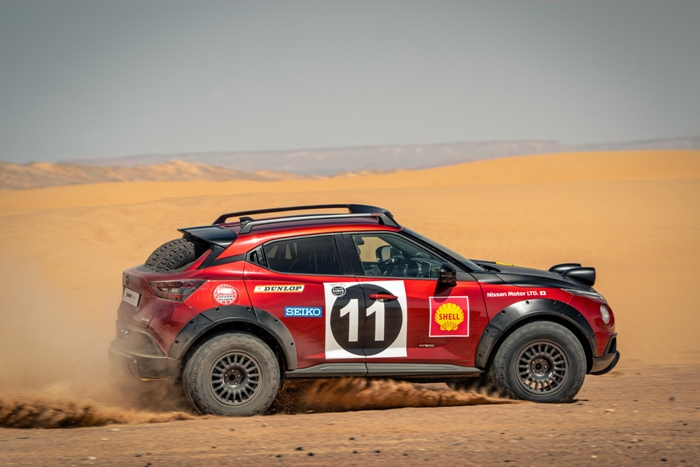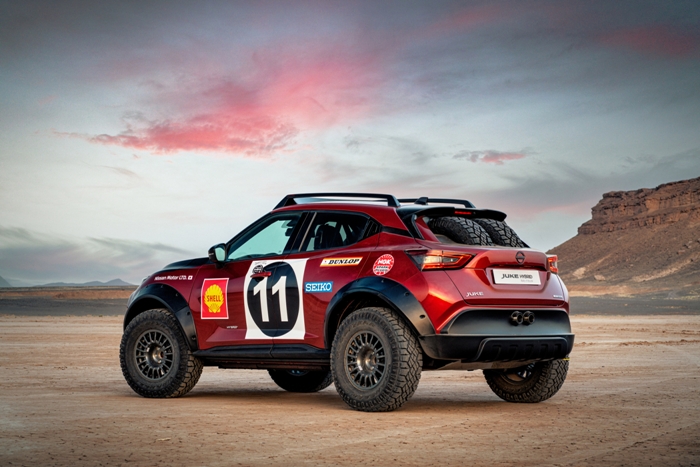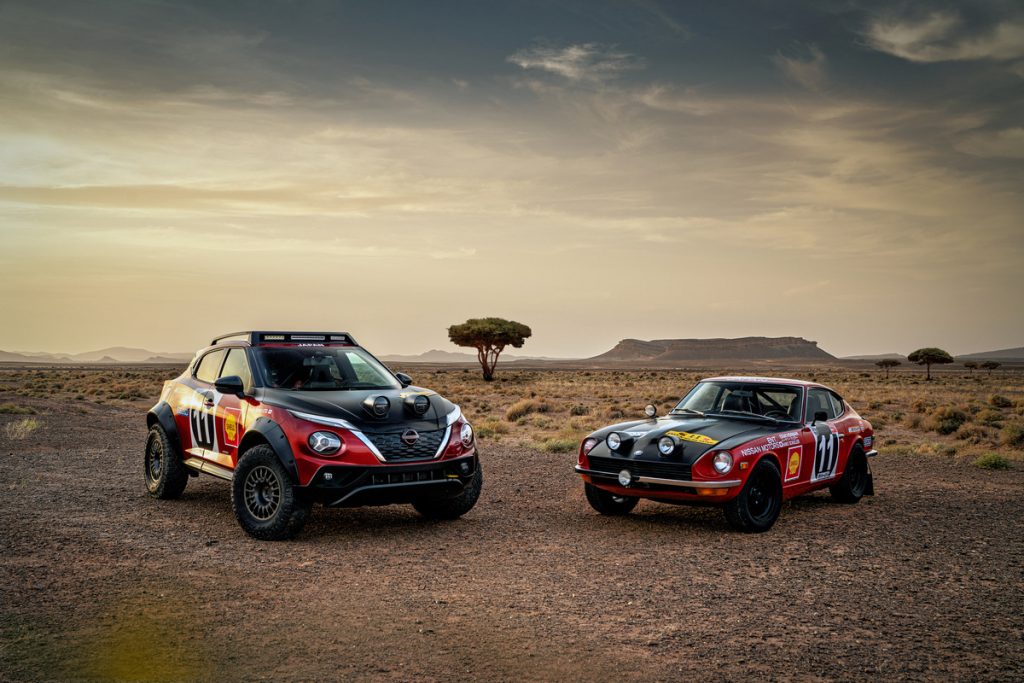… Nissan JUKE Rally Tribute …
Last year Nissan issued some images of a rather special Nissan Juke to celebrate the company’s participation in the East African Rally 50 years earlier. W-e-l-l, they’ve only gone and built one! The Nissan JUKE Hybrid Rally Tribute.

Apparently the idea was so well received by the public that they built this one-off ahead of the introduction of the new JUKE Hybrid this summer.
Coralie Musy, Vice President, Brand and Customer Experience, Nissan, said: “We are currently preparing an exciting new chapter of JUKE history in advance of the introduction of the new JUKE Hybrid in the summer. It will offer the excitement and agility customers would expect of our iconic crossover, with both improved performance and efficiency.”
The JUKE Hybrid powertrain consists of a new generation, state-of-the-art Nissan internal combustion engine specifically developed for working in a hybrid powertrain application. It produces 69kW (94hp) and 148Nm of torque.
On the electric side, the main electric motor produces 36kW (49hp) and 205Nm of torque, while there is a 15kW contribution from a high voltage starter/generator, all of which is fed by a 1.2kWh water-cooled battery. The net result is a powertrain providing 25% more power than the current petrol engine option, with a fuel consumption reduction of approximately 40% in the urban cycle, and up to 20% combined. (Figures subject to homologation)
An advanced motorsport-inspired low friction multi-modal gearbox will be employed which uses dog clutches instead of conventional synchroniser rings to shift the 4 “ICE” gears and 2 “EV” gears. Additionally, to reduce friction, this gearbox does not use a clutch. All vehicle starts are 100% electric, and the 2 EV motors are used in combination to synchronise the gears, delivering smooth, connected and responsive acceleration.
The gearbox is controlled by an advanced algorithm, managing the shift points, battery regeneration, as well as the advanced series-parallel architecture. The powertrain can seamlessly navigate through different hybridisation combinations (series, parallel, series-parallel) according to acceleration and power requirements and without any driver input.

The Rally Tribute car takes its design cues from the iconic 240Z that competed so successfully in the desert rally over half-a-century ago.
The most obvious modification are the enlarged wheel arches to accommodate the 265/70 R16 off-road tyres, while the additional lights mounted on the hood and roof echo those of 50 years ago.
Similarly, the black hood and enlarged black wheels are a visual homage to the 1971 vehicle that competed in the East African Rally. The use of vintage sponsor logos and the number 11 also reflect aspects of the 240Z rally car, as do the addition of reinforced plates under the front and rear valances which offer protection to the vehicle’s underside. Reinforced and long-travel suspension has been fitted all-round.
Inside, the interior has been modified with a tubular cage, racing seats and four point harnesses, and the rear seats have been removed to provide space for spare wheels.
Other modifications include a competition fire extinguisher, crew intercom system, and an Alcantara trimmed steering wheel with a hydraulic handbrake with high-reach handle.
“As part of our commitment to electrify our range, this year will see an unprecedented wave of new Nissan electrified powertrains and vehicles. As well as the new JUKE Hybrid, we will also introduce our e-POWER drivetrain on the Qashqai crossover. And in the second half of the year, the all-new X-Trail Crossover will also be introduced,” said Coralie Musy.
Nissan in the East African Safari Rally
In 1971, the legendary 240Z that took the victory of the gruelling East African Safari Rally was driven by Edgar Herrmann with navigator Hans Schüller. Indeed, the rally was a resounding success for the brand, with the 240Zs coming home in second and seventh positions. Furthermore, the victory represented the brand’s second consecutive victory in the rally.
The rear wheel drive 240Z was powered by a 2.4 litre straight six cylinder engine, producing 210 PS. The victorious car was restored in 2013 and is part of Nissan’s heritage collection in Zama, near Nissan global headquarters in the Kanagawa prefecture of Japan.
Which all begs the question. With the WRC going hybrid, do you think Nissan could be tempted? Apparently the answer is ‘No’ but you know what James Bond said: “Never say never!”
Fingers crossed, eh?

**